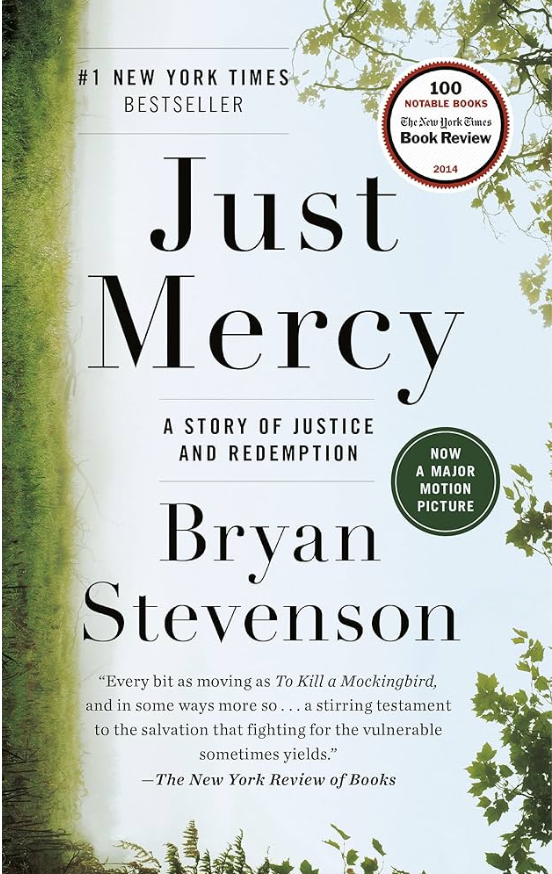During the summer, the junior class was assigned to read Just Mercy, an autobiography of Bryan Stevenson, executive director of the Equal Justice Initiative and representative of countless death row inmates. The premise of the book was Stevenson standing up against the corrupt and illegal actions of law enforcement and legal representatives that cause economic and social minorities to suffer disproportionately in prison.
Stevenson introduces Walter McMillian as a death row inmate who was wrongfully accused for the murder of Ronda Morrison, a beloved member of the Monroeville community. When arrested, McMillian was illegally sent to death row before his trial with presumptions of guilt based upon inconsistent and improbable claims. Because of McMillian’s previous involvement in an affair with Karen Kelly, a white woman, the fabricated claims of sodomy and his involvement in the murder were accepted. Due to Monroeville’s history of racial discrimination, McMillian’s countless black witnesses, who were with him at a fish fry at the time of the murder, weren’t trusted by the jury over the perjurious testimony of a convicted criminal, Ralph Myers. Stevenson stresses the importance of the involvement of police officers in fabricating evidence and a testimony, even going as far as to put Myers on death row when he refused to lie in front of the court. Blaming McMillian was easier than admitting to the public that the law enforcement had failed to find the true murderer of Ronda Morrison. In many ways, they used McMillian to save their face–a disgusting tactic employed by the justice system to enforce the image of an unwavering sense of security for the privileged (something that the socially and economically marginalized groups don’t have). McMillian’s case was not a standalone case exemplifying the imperfections of an otherwise unblemished country. Rather, Stevenson’s purpose in detailing Walter’s case is to show the recurrent mistreatment of disadvantaged people who are targeted just because they are easier to incarcerate and punish than those with the protection of money, influence, and privilege. In citing the illegal circumstances of this case, the reader becomes aware of how the current legal system, although far improved from its 18th century counterpart, still holds traces of old punishment techniques that used the burning, hanging, or torturing of unprotected and easily convictable victims to instill fear and obedience, or in today’s case: “safety.”
McMillian is not the only example Stevenson uses to illustrate the faults in the legal system. Indeed, it’s not only those incarcerated, but also the victim’s families who are wronged. In the case of Herbert Richardson, a traumatized and debilitated veteran who accidentally bombs two young girls in a misconceived plan, Stevenson describes the lack of legal assistance for both Richardson and the victim’s families. In fact, the case wasn’t even going to be tried for capital punishment at first because the victim’s family was poor and black. This is not to say that capital punishment would be a justifiable court ruling in any case, but rather that capital punishment is illustrated by the legal system to be an elite sentence designated only for the privileged victims as if their suffering should be judged to be tenfold than that of the underprivileged. Victims are victims. Their race, jobs, or religion should be separate from the crime that was committed against them. However, Stevenson’s description of the family’s desperation for legal assistance–even from the lawyer defending the person who killed their children–shows that in reality there’s prejudice, bias, and disproportionate treatment of victims in the legal system.
Stevenson’s Just Mercy covers the multitude of ways that the legal system has failed and failed again to serve everyone equally. As Stevenson recounts, “Finality, not fairness” (78) seems to be the purpose of the justice system–a broken institution created to serve the rich and eat the poor. The constant disproportion of white jurists in capital cases and black inmates on death row is the outcome of a fundamental issue which is pervasive not only throughout America but throughout the world—hierarchy. Whether social, racial, or economic, hierarchy is the foundation of unequal treatment, privilege, and rights. Just Mercy describes a facet of this greater social structure realistically and calls to action a movement to rectify these injustices.
Works Cited
Stevenson, Bryan. Just Mercy: A Story of Justice and Redemption. Random House Audio, 2014.


